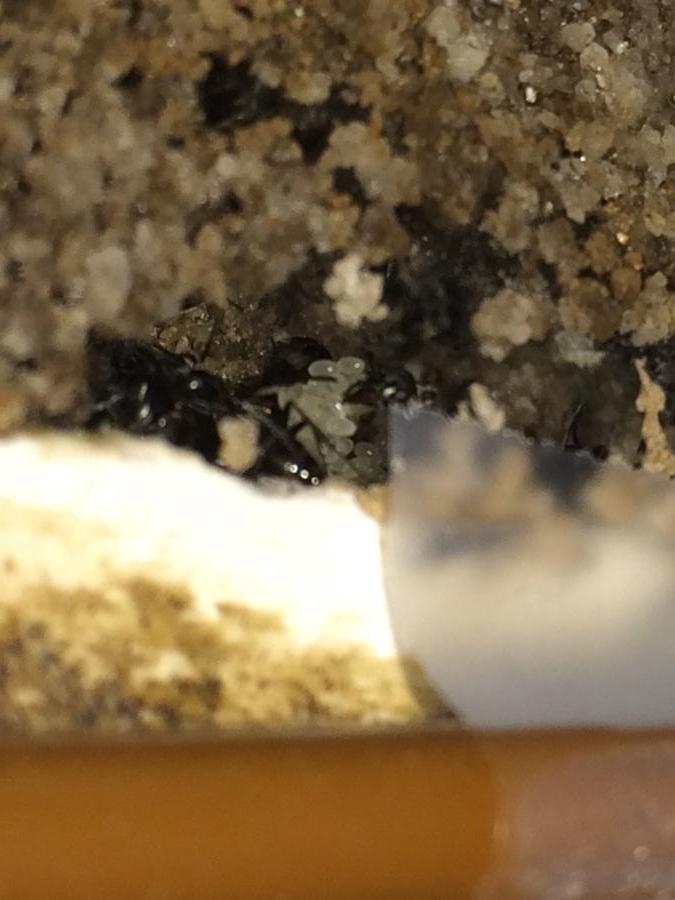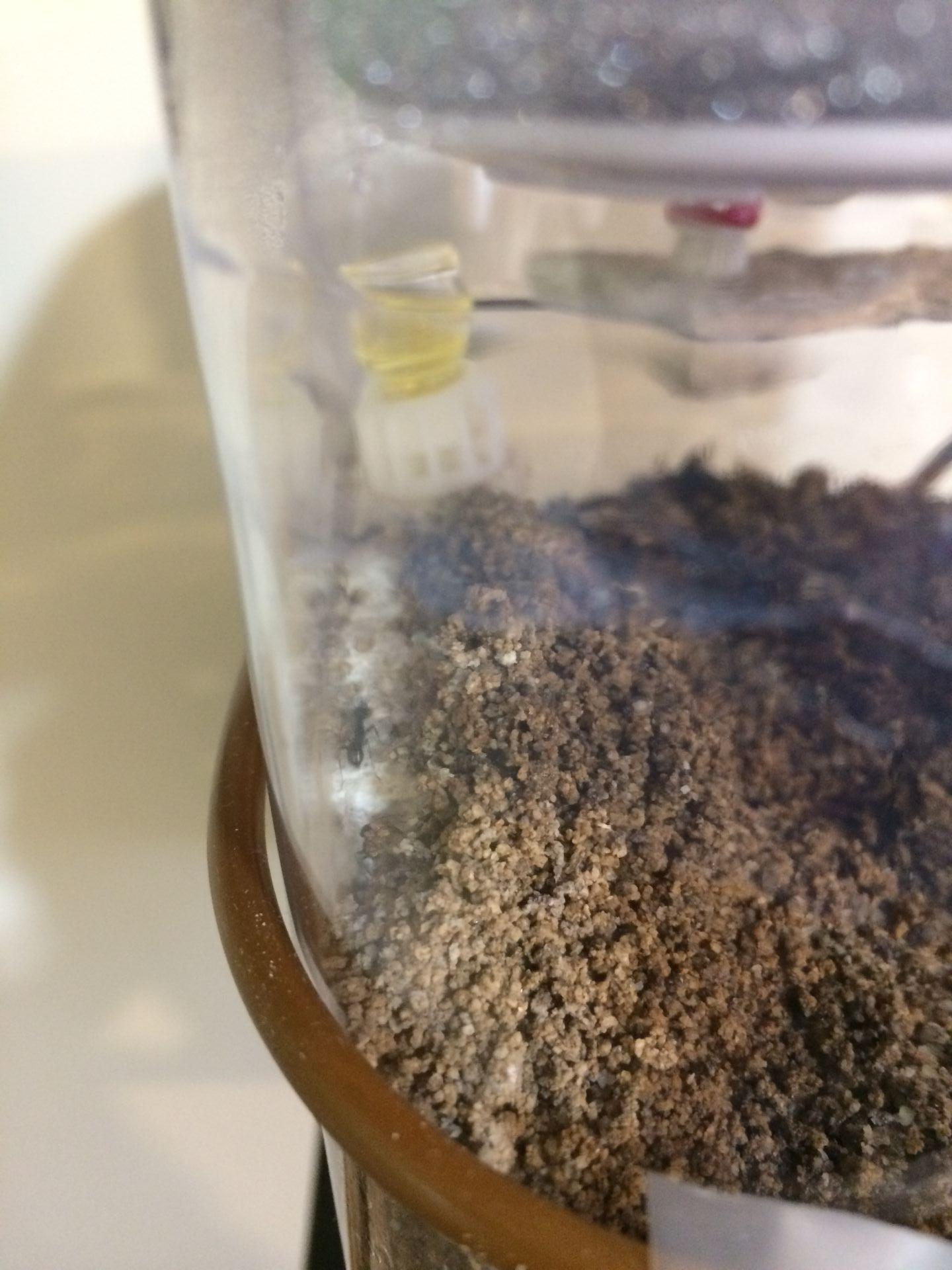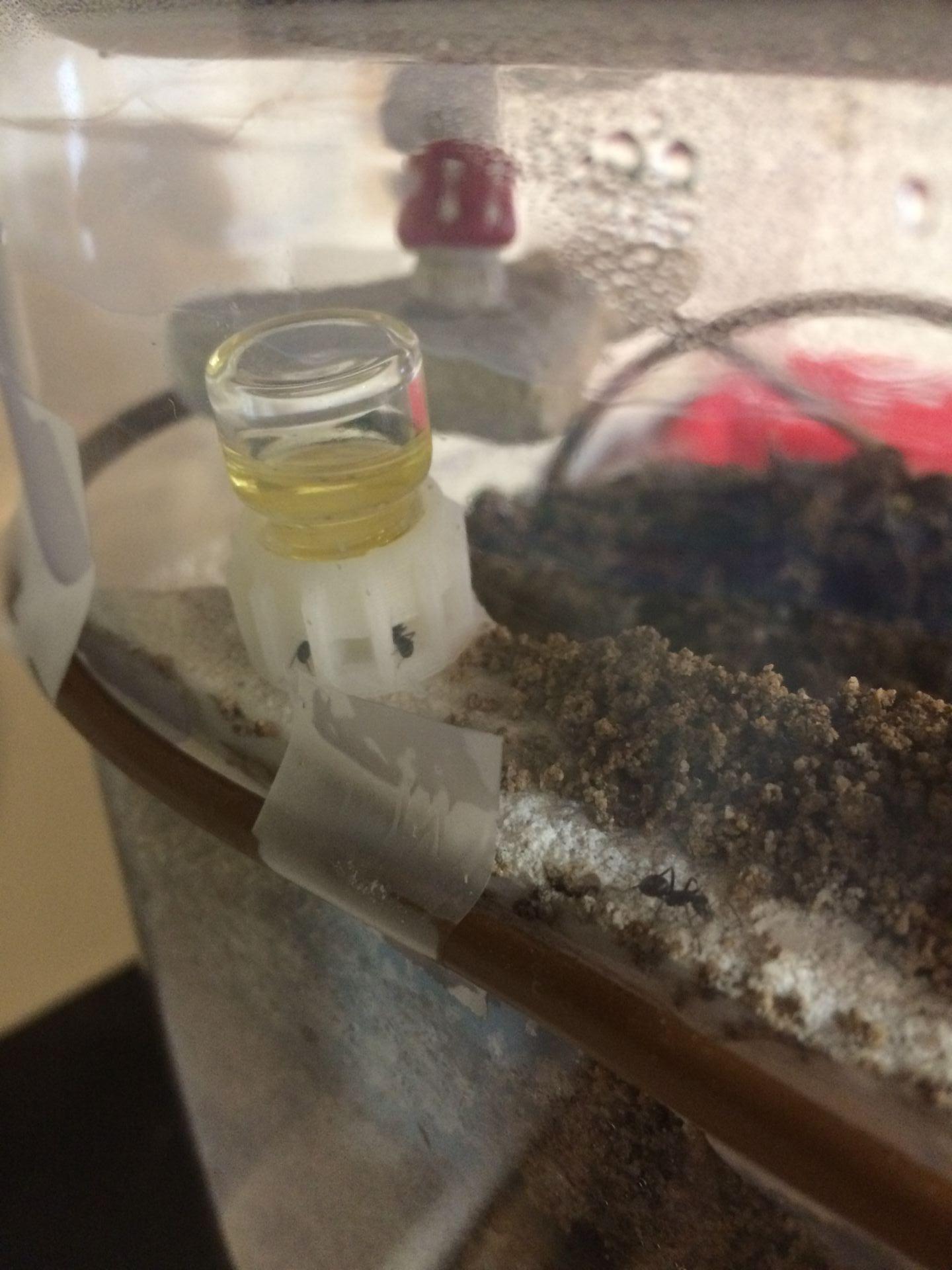I would start by adding 1 or 2 isopods to gauge the ant's reaction. It would be neat if it was self-sustaining and the ants would kind of "farm" the isopods.
- Formiculture.com
- Forums
- Gallery
- Members
- Member Map
- Chat

I would start by adding 1 or 2 isopods to gauge the ant's reaction. It would be neat if it was self-sustaining and the ants would kind of "farm" the isopods.
Edited by ANTdrew, February 19 2021 - 4:01 AM.
I agree with you ANTdrew that it's a bit small for most isopods. Personally I wouldn't, but I do keep Venezillo parvus in a container about that small.
There are three very small isopods commonly available afaik:
1. dwarf whites. Apparently they like to burrow. They are parthenogenetic, and known to "teleport" into other isopod bins. Ref. Facebook group "A group where we all angry react dwarf whites"
2. micro purples. TBH I know almost nothing about them. Apparently they like to stay near the surface.
3. V. parvus. Mine initially preferred burrowing but now are all over their little bin. They enjoy eating dead leaves down to skeletal remains. They can roll up.
I suspect but am not sure that my Pogonomyrmex were stressed by springtails and mites. I would hesitate to add isopods.
Many isopods are also not the best clean-up crew ever. Springtails are the CUC for isopods.
Isopods also tend to like a lot of organic matter.
Edited by OhNoNotAgain, February 19 2021 - 10:27 AM.
Past & Present
Veromessor pergandei, andrei, stoddardi; Novomessor cockerelli
Camponotus fragilis, Camponotus sansabeanus (inactive), vicinus, laevigatus/quercicola, CA02
Pogonomyrmex subnitidus, P. californicus (inactive)
Liometopum occidentale (inactive); Prenolepis imparis; Myrmecocystus mexicanus (inactive); Tetramorium sp. (inactive); Lasius sp.
Termites: Zootermopsis angusticollis, and a box of drywood termites that can't be seen
Isopods: (most no longer keeping) A. gestroi, granulatum, kluugi, maculatum, vulgare; C. murina; P. hoffmannseggi, P. haasi, P. ornatus; V. parvus, P. pruinosus, T. tomentosa
Spoods: (no longer keeping) Phidippus sp., other
Ok! Ixnay on the isopods!
Oh, btw ANTdrew, I've run these gals through a key and they've turned out as F. subsericea. Pubescence on the legs, dense on what looks like the last three gastric tergites points to F. subsericea. Idk if you care or not, but if you could get some close-ups of a worker I could nail it down.
My Main Journal | My Neivamyrmex Journal | My Ant Adoption | My YouTube
Join the TennesseeAnts Discord Server! https://discord.gg/JbKwPgs
Hmmm, the fellow I traded them for keyed these out with a microscope as F. argentea. I’ll try to get as good of a close up as I can though.
BTW, I spotted a big pile of eggs in their tunnels today! I’m so pumped!
Interesting.... Close-ups will be great. Congrats on the eggs! How many do you estimate there are?
My Main Journal | My Neivamyrmex Journal | My Ant Adoption | My YouTube
Join the TennesseeAnts Discord Server! https://discord.gg/JbKwPgs
Yeah, looks like F. subsericea to me.
Edited by TennesseeAnts, February 19 2021 - 6:04 PM.
My Main Journal | My Neivamyrmex Journal | My Ant Adoption | My YouTube
Join the TennesseeAnts Discord Server! https://discord.gg/JbKwPgs
Dang, what makes you say that?Yeah, looks like F. subsericea to me.
Dang, what makes you say that?Yeah, looks like F. subsericea to me.
Dang, what makes you say that?Yeah, looks like F. subsericea to me.
Key to New England Formica - AntWiki (couplets 12 and 13)
My Main Journal | My Neivamyrmex Journal | My Ant Adoption | My YouTube
Join the TennesseeAnts Discord Server! https://discord.gg/JbKwPgs
Scapes also look like they're longer than the head, so that further cements my ID.
My Main Journal | My Neivamyrmex Journal | My Ant Adoption | My YouTube
Join the TennesseeAnts Discord Server! https://discord.gg/JbKwPgs
Dang. My world is shaken. I wanted them to be argentea because nobody keeps them.
Plenty of people keep them, they're just usually improperly identified as other Formica fusca-group species. They're also much more common in the West than in the East from what I've seen.
My Main Journal | My Neivamyrmex Journal | My Ant Adoption | My YouTube
Join the TennesseeAnts Discord Server! https://discord.gg/JbKwPgs
Update 2-23-2021
This colony is doing very well and getting more and more active. They are fully out of hibernation mode after many, many months. I was ecstatic to spot a big clump of eggs at the end of last week, which they are keeping near the heat cable in the uppermost chamber the ants have formed underneath one of the hanging ledges. Here is a look at the eggs:



I don't think the color is a good indicator of species. TennesseeAnts is most likely right about them being F. subsericea. Also just looking at their ranges on Antmaps indicates that F. subsericea is far more common in the east than F. argentea.
Edited by Kaelwizard, February 23 2021 - 7:07 AM.
0 members, 0 guests, 0 anonymous users